Strategy
Strategy is a carefully crafted combination of choices that strategically positions a company for success. It is a set of choices about winning. It is a comprehensive range of strategies that uniquely position the company within its industry to gain a sustainable advantage and superior value compared to its competitors. Strategy is about choosing a one-of-a- kind and valuable position based on interconnected activities that are extremely challenging to replicate.
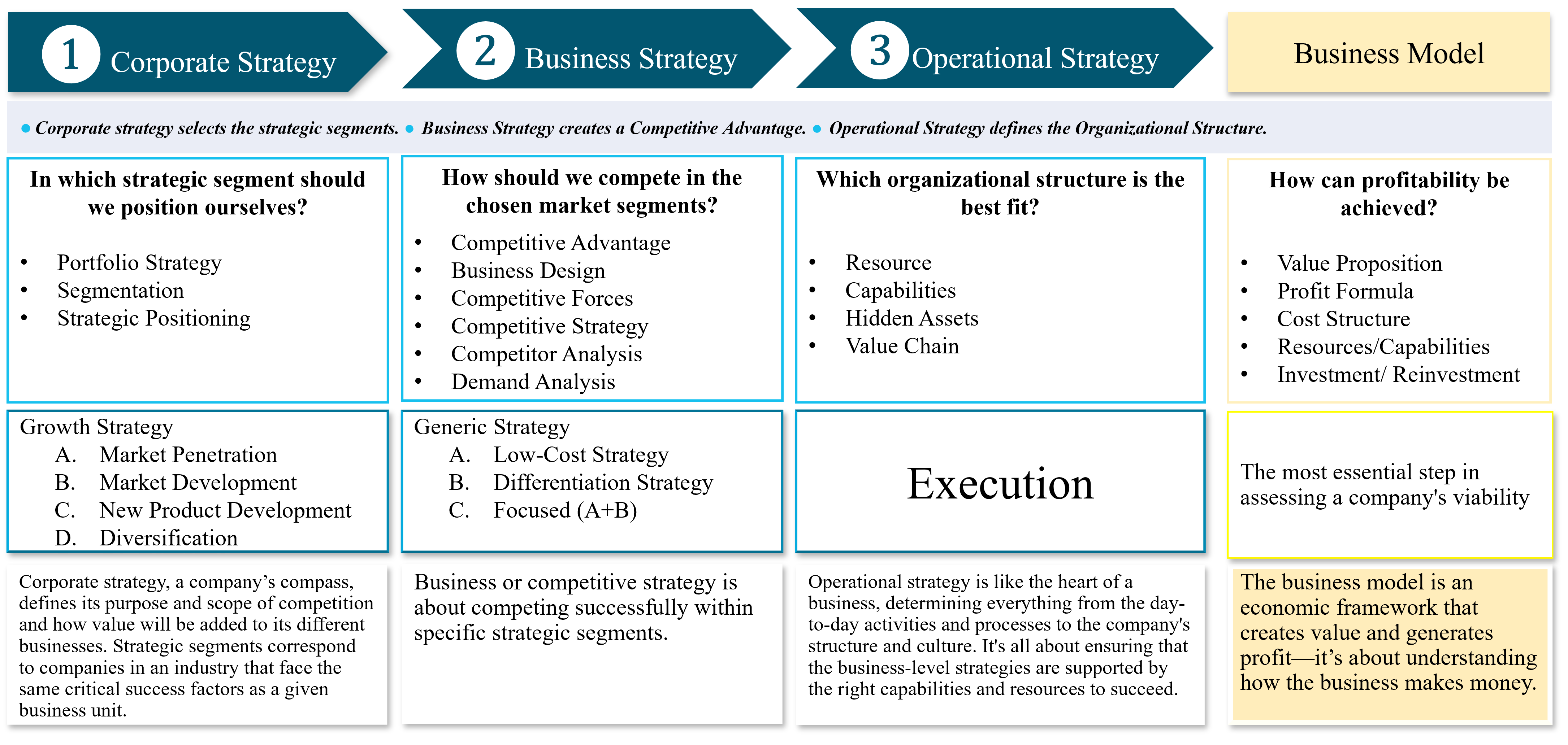
Fintelligence Consultants Strategic Planning Framework
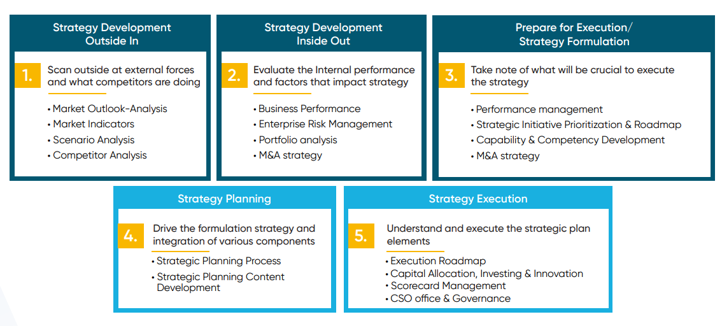
Why Corporate Strategy?
- In the business world, strategy is a crucial component that involves a unique set of integrated choices to position a firm within its industry. The goal is to create sustainable advantage and superior value compared to competitors.
- Vision, mission, and objectives act as guiding principles that shape the strategy.
- Portfolio strategy helps allocate internal and external resources to the most suitable products for the target market.
- Growth strategy focuses on developing options for organizational growth that align with core values and strategic direction.
What is Business Strategy (Competitive strategy)?
- A company’s success relies on its ability to compete effectively at the business unit level by maintaining a favorable relationship between the relative price and cost.
- Differentiation allows for a higher relative price, while lower costs involve finding more efficient ways to create, produce, deliver, sell, and support the product or service, resulting in a favorable competitive advantage.
- If the net result of the configuration is positive, you can be confident that your strategy has created a competitive advantage that can outperform the competition.
What is Strategic Positioning?
- Strategic positioning is the deliberate choice that a company makes to create unique value compared to its rivals. This value can be translated into either a premium price or lower costs, and it is crucial for product and value creation.
- Market strategy determines product positioning, while operations strategy aligns resources to support the market strategy profitably.
- Market Segmentation
- Target Markets
- Differentiate from competitors
- Marketing Planning
Strategic Planning Elements
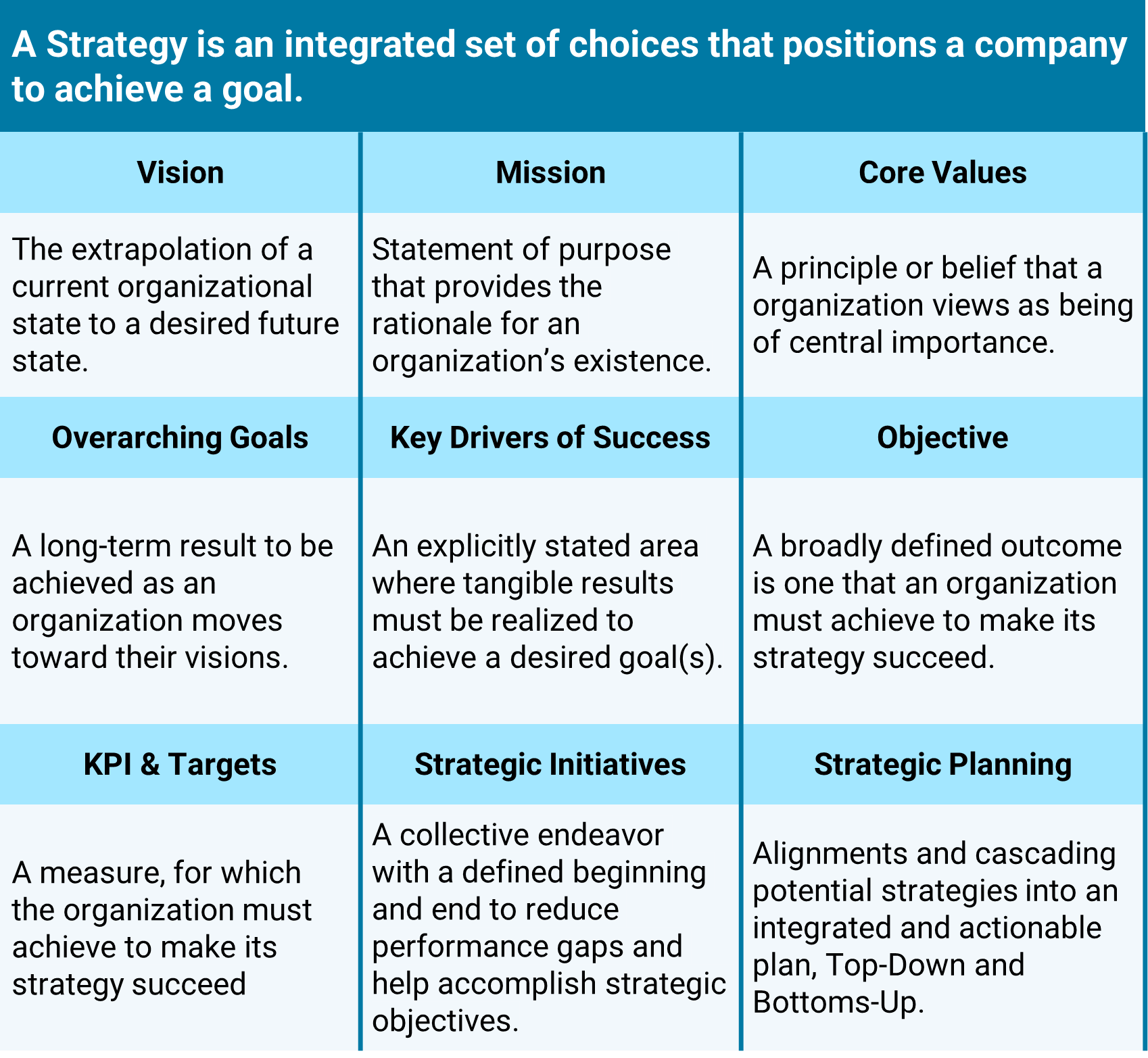
Our role is to empower our clients, equipping them with the tools and knowledge to define their strategic paths and future vision. We guide them in executing concrete steps to achieve these goals, fostering a collaborative journey that builds understanding, unifies leadership, and drives action. This empowerment instills a sense of control and confidence in our clients, knowing they are making informed and strategic decisions.
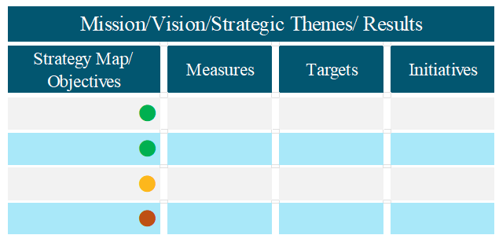
- The company’s strategy establishes the long-term direction and scope, aiming to attain a competitive advantage through effective capability building and resource allocation.
- It is a cohesive and integrative framework of decisions designed to realize the company’s ambitions and corresponding objectives in the most efficient, effective, and least risky manner.
- The strategy strives to achieve sustainable long-term advantages by adeptly managing the company’s strengths and weaknesses and by responding to current and prospective market opportunities and threats.
- It encompasses all levels of the organization, ensuring that each level contributes to the company’s goals and delineates the economic and non-economic contributions the company intends to make to its stakeholders.
Strategy – External Scanning

Strategic and Business Planning
- A strategic plan is focused on mid to long-term goals and explains the basic strategies for achieving them.
- A business plan is short- or mid-term goals defining the necessary steps.
Financial Planning
- FP & A to steer the company towards its strategic goals, including revenue growth, profitability & cash flow.
- A Finance Business Partner collaborates & guides for decision-making, insights & evaluating performance using various tools.
Operational Planning
- A roadmap to align to a strategic plan & outlines timelines, & critical milestones for execution.
- Transition from strategic to operational plan by converting into an annual plan and further at monthly and weekly intervals to drive execution.
Strategy – Inside Analysis
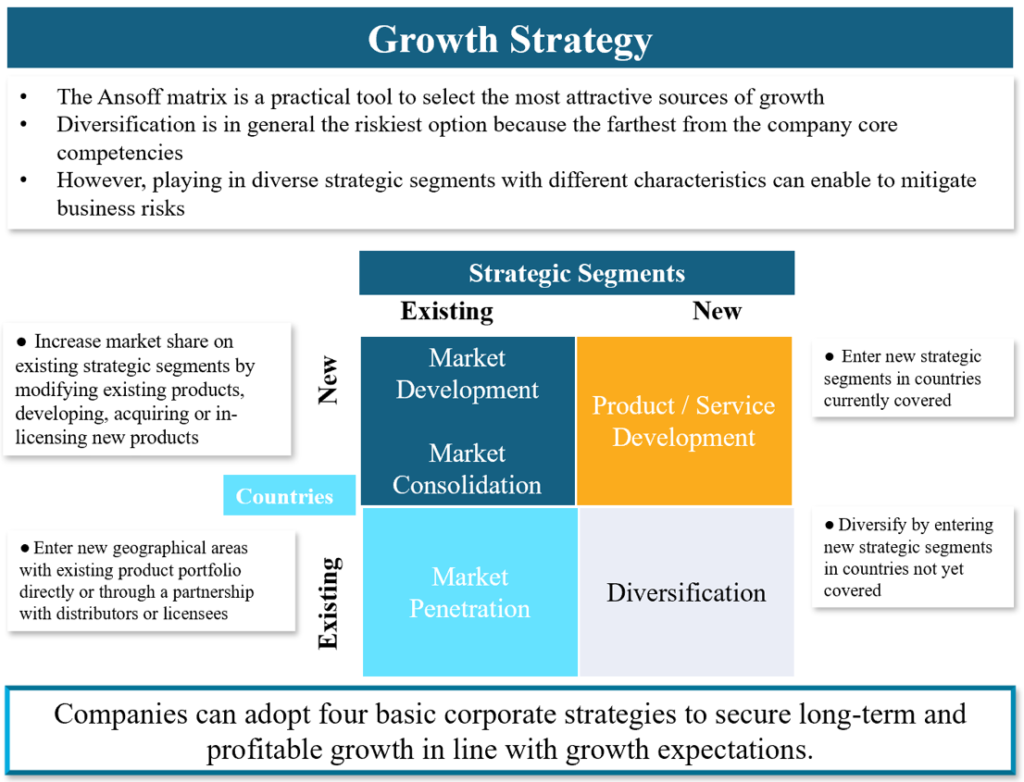
Portfolio Analysis
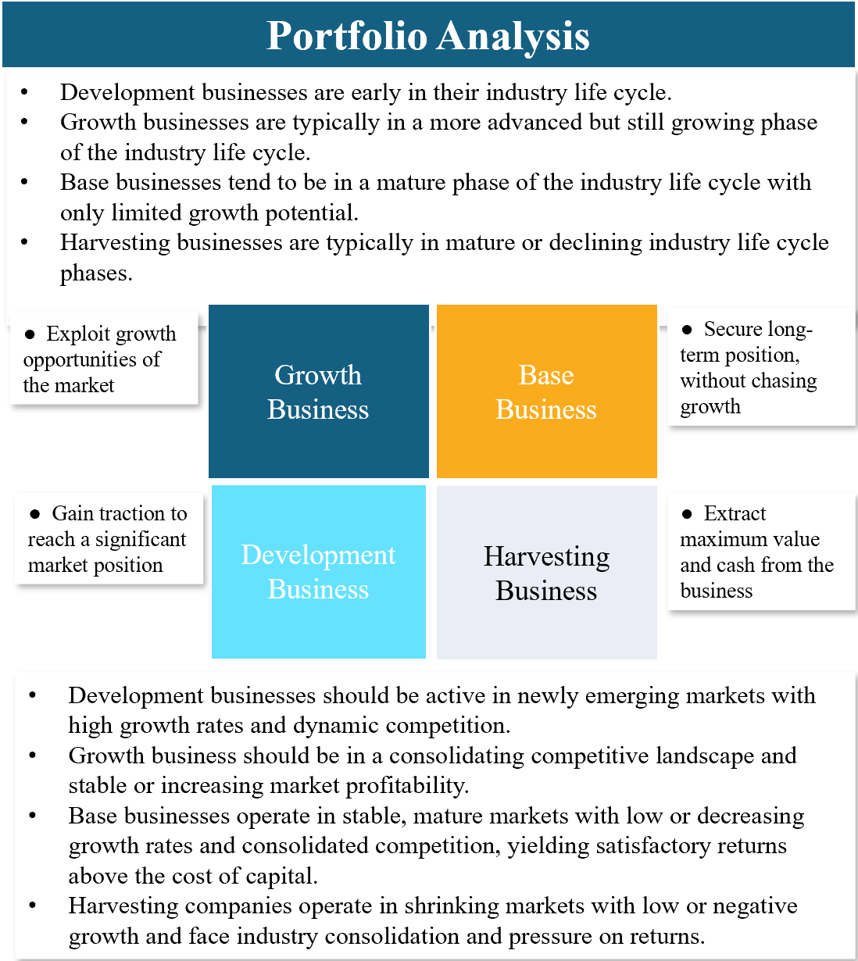
Business Strategy
Business Strategy
Business Strategy, also known as a Competitive strategy, is about being different. It means deliberately choosing a different set of activities to deliver a unique mix of value—activities that fit together and reinforce each other.
Generic Strategy
Low-cost strategies keep costs low to either offer customers lower prices or widen profit margins
- Cost leadership targets mass markets using economies of scale, high-capacity utilization, & efficient resources to keep costs very low
- Cost focus targets niche markets. A similar scale of production can make gaining cost advantage more challenging but can be done by keeping things simple and avoiding R&D costs
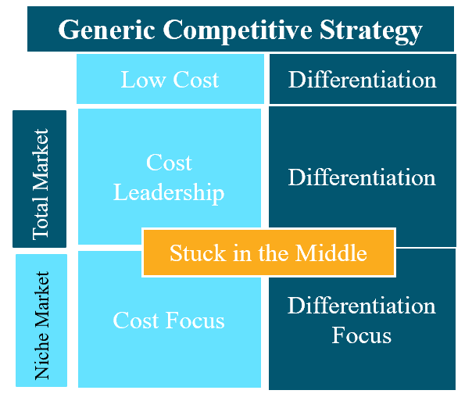
Differentiation
Differentiation is about the unique strengths that underlie your competitive advantage.
- Differentiation is the vessel helps Making money in business depends on achieving competitive superiority through differences.
- The typical market has 5 to 7 relevant competitors, of which 2 of hose with the strongest and most unique models—generally capture more than 70 percent of the profit pool (returns above the cost of capital) and therefore can out-invest the others.
- Businesses differentiate themselves from their competitors in three broad ways:
- Superior cost economics
- Unique product features
- Control over a key position in a larger economic system.
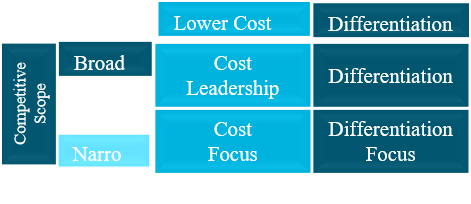
Low-Cost Leadership
Typically achieved differentiation through cost position:
- Economies of scale and the ability to achieve higher levels of productivity in manufacturing (e.g., ArcelorMittal),
- Superior supply chain management of a set of vendors (e.g., Wal-Mart, Li & Fung), and
- Pure network economics (e.g., Vodafone)
Unique product and service features were the dominant forms of differentiation in about 30 percent of cases.
- Brand (e.g., Virgin’s set of businesses),
- Patentable product features (e.g., Apple’s iPad), or
- Superior service levels (e.g., Singapore Airlines’ first class).
Control over a network, a key resource, only 10% of companies
- (e.g., Microsoft’s operating system)
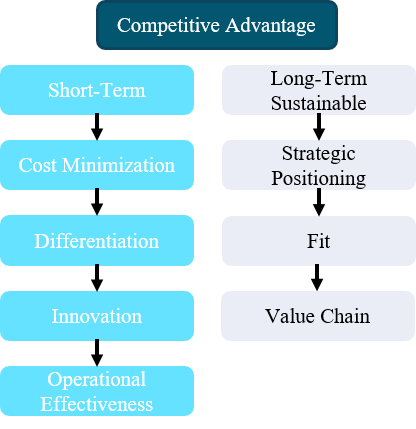
Two frameworks guide business strategy.
- The Industry Structure framework, which focuses on the drivers of industry profitability based on the industry’s average price and cost.
- The Relative Position framework, which focuses on the differential activities of competitors based on their relative prices and fees.
Strategy explains how an organization will achieve superior performance when faced with competition. But what exactly is competition? Competitive strategy involves creating a unique value proposition through a distinct set of activities. Competitive strategy is about being different. It means deliberately choosing a different set of activities to deliver a unique mix of value—activities that fit together and reinforce each other.
Strategic Positioning Process
- Market Segmentation – Identify customer needs and market segments.
- Identification of Target Markets – Select target segments that align with the company’s goals and objectives.
- Identification of Different Advantages – Develop powerful positioning concepts to differentiate from competitors.
- Marketing Planning – Develop a comprehensive marketing mix based on the chosen position for each segment.
| Business Design | ||
|---|---|---|
| CUSTOMER SELECTION | Which customers to serve? Specific understanding of the chosen customer set (for which the organization is best suited or which it is best to serve) and of the one selected for moving away from. |
|
| UNIQUE VALUE PROPOSITION | What value to create? The reasoning behind a purchase decision — what specific value the customers buy and how they make a choice among competing offerings. |
|
| VALUE CAPTURE | How to make profits? Particular ways the organization gets rewarded for the value it delivers to the customers — both within and beyond product sales and service fees |
|
| Differentiation/ STRATEGIC CONTROL | How can the profit stream be protected? A strategic control point refers to customer lock-in or switching costs. The goal is to preserve the profit stream the business design has created against the corrosive effect of competition and customer power.
|
|
| SCOPE | What activities should be performed? Refers to a company’s actions to remain relevant to its customers, generate high profits, and maintain strategic control. What changes in scope do I need to make to stay customer-relevant (Value Proposition), generate high profits (Profit Model), and create a strategic control (Lock-in)? Each dimension is linked to all the others. For example,
|
|
Business Model Innovation
A business model serves as a system that enables the various components of a business to come together and explains how enterprises operate. It helps us understand who the customer is, how we generate revenue, and what underlying economic principles allow a company to deliver value to customers at a reasonable cost. Our unique value proposition is the key to our business model. We carefully evaluate each element that adds value for the customer, ultimately leading to revenue for the company. Revenue streams arise from successful value propositions, while costs refer to the resources needed for each revenue stream. A business model is compelling, as competitors cannot easily replicate it. Even if they attempt to do so, the likelihood of their success is less than 1%.
What are the significant components of business model innovation?
Business Model Innovation Trigger
- As product lines mature and new development slows, companies encounter a growth gap between their desired direction and what the existing business can deliver.
- Companies must innovate business models to deliver new types of value that involve venturing into unexplored areas or “white space.” beyond their core business.
- Changes in the competitive landscape or unmet customer needs can present significant opportunities for growth through a business model innovation.
Customer and Value Proposition
- Customer Value Proposition What value is created? What drives purchase decisions? What specific value do customers buy? How do customers choose between competing offerings?
- The CVP describes how a company creates value for a given set of customers at a price.
Profit Formula & Resources/Capabilities
- Profit Formula. The difference between Revenue Streams and Cost Structures is profit.
- Revenue Model. Customer offerings generate revenue streams, representing the company’s cash from each customer segment. Revenue streams are like arteries, with customers at the heart of the business model.
- Cost structures result from resources and value chain activities (Capabilities) costs incurred in creating and delivering value, maintaining customer relationships, and generating revenue.
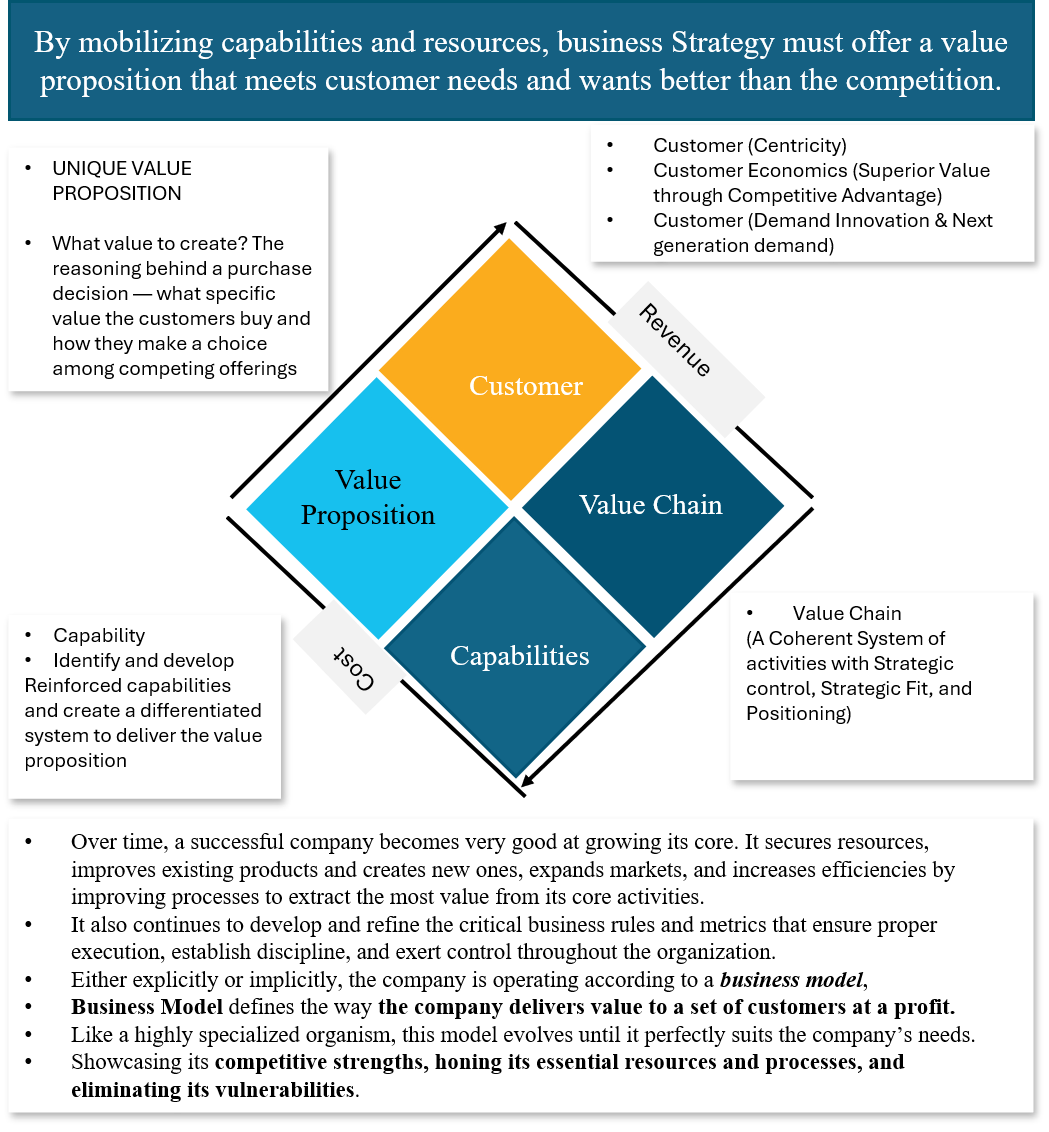
Execution
“Strategy is aimless without execution, and Execution is useless without a strategy.” Executing strategic goals effectively is essential, execution that fails most companies. The strategic planning framework follows top-down objectives supported by bottom-up initiatives that link strategic objectives to operational-level employee activity.


